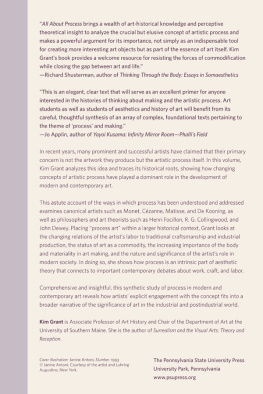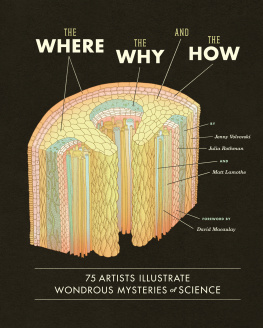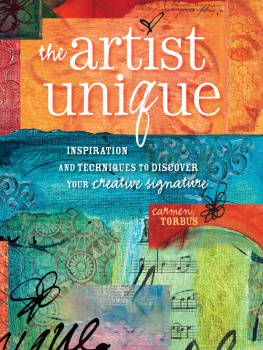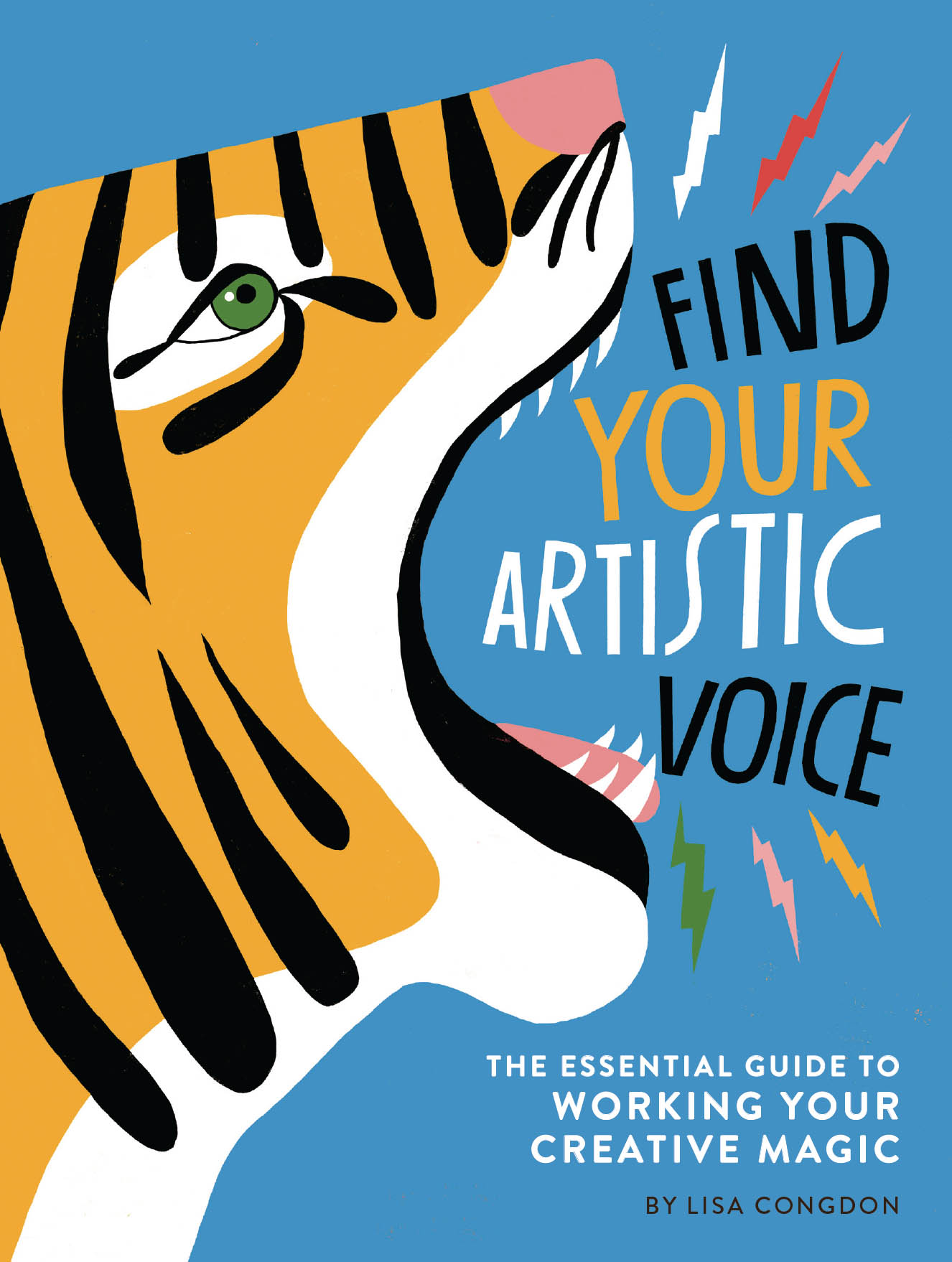
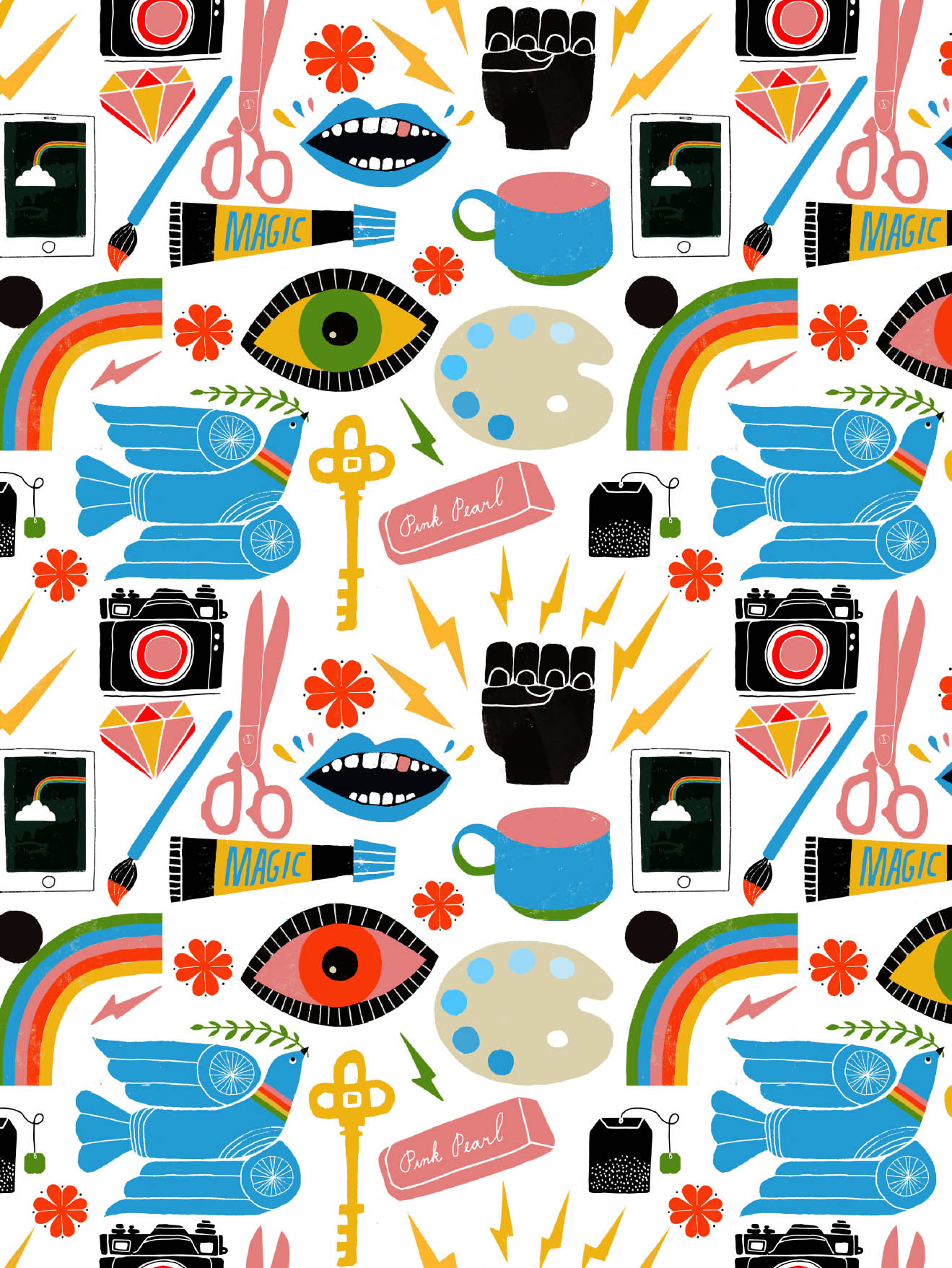
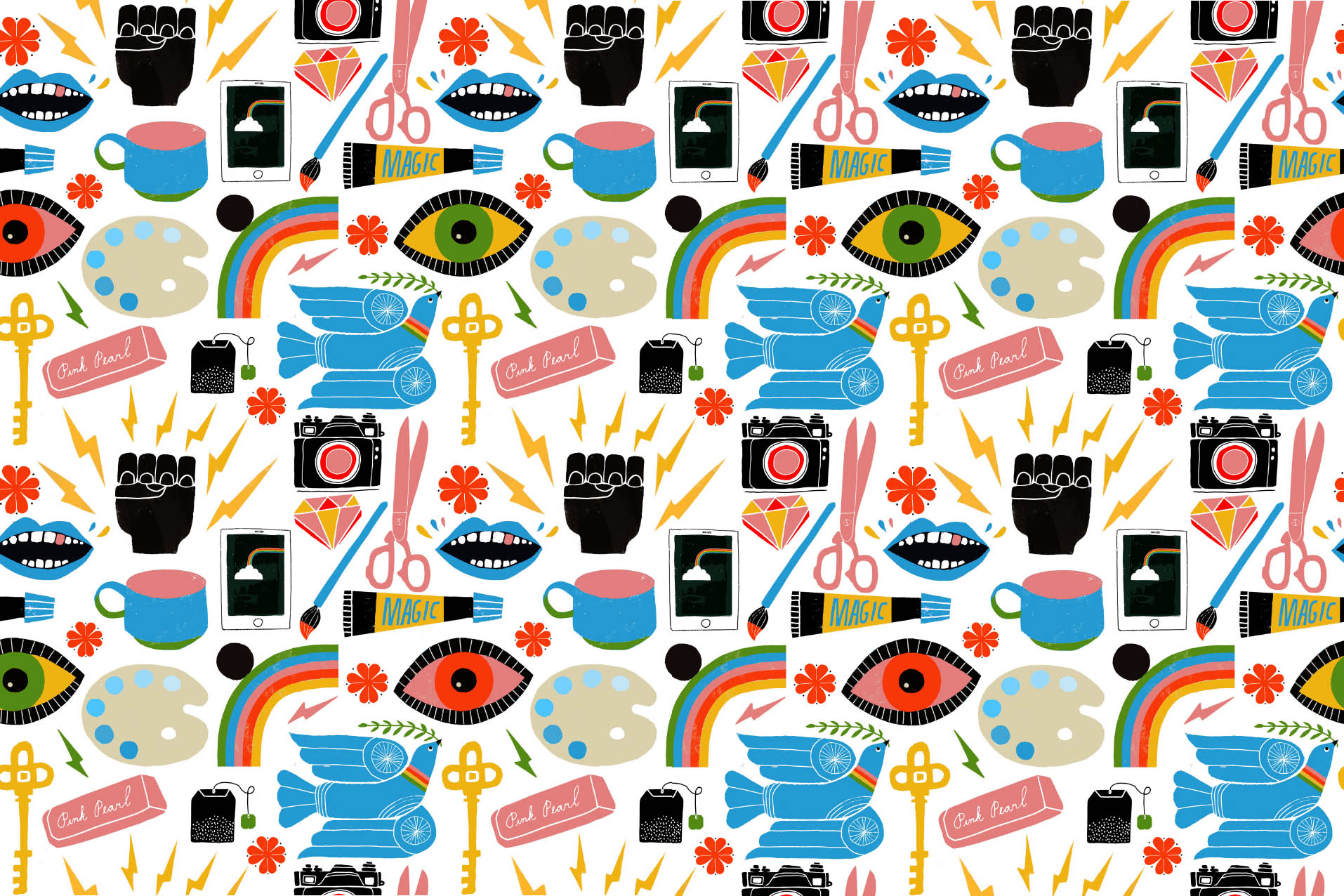
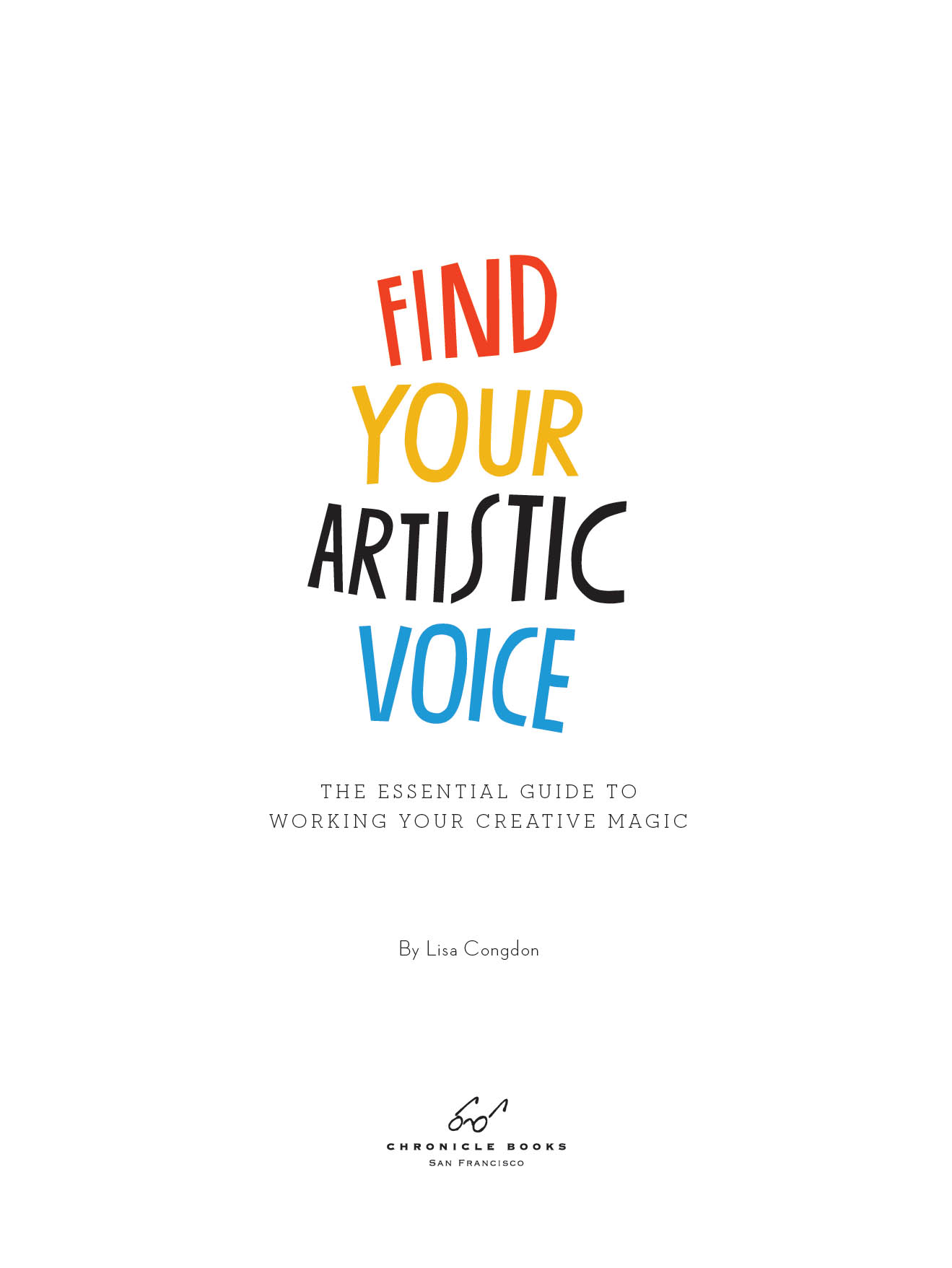
For my wife, Clay Lauren Walsh,
who is by my side with her heart wide open
every single day on this journey.
Copyright 2019 by Lisa Congdon.
All rights reserved. No part of this book
may be reproduced in any form without
written permission from the publisher.
ISBN: 978-1-4521-6905-7 (epub, mobi)
Library of Congress Cataloging-in-Publication Data available.
ISBN: 978-1-4521-6886-9 (paperback)
Design by Kristen Hewitt.
Chronicle books and gifts are available at special quantity discounts to corporations, professional associations, literacy programs, and other organizations. For details and discount information, please contact our premiums department at or at 1-800-759-0190.
Chronicle Books LLC
680 Second Street
San Francisco, California 94107
www.chroniclebooks.com
CONTENTS

INTRODUCTION
Conformity Is for the Birds
CHAPTER ONE
What Is an Artistic Voice?
CHAPTER TWO
Why Does Having a Voice Matter?
CHAPTER THREE
The Path
CHAPTER FOUR
Navigating Influence
CHAPTER FIVE
The Importance of Showing Up, Practicing, and Setting Routines
CHAPTER SIX
Begin Anyhow: Moving through Fear
CHAPTER SEVEN
Strategies for Developing Your Own Voice
INTRODUCTION

CONFORMITY IS FOR THE BIRDS
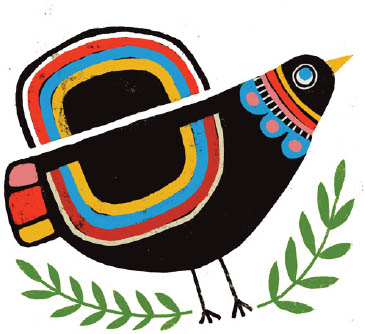
Nonconformity is not only a desirable thing, it is a factual thing... all art is based on nonconformity... Without nonconformity, we would have had no Bill of Rights or Magna Carta, no public education system, no nation upon this continent, no continent, no science at all, no philosophy, and considerably fewer religions.
Ben Shahn
When I was a kid, I wanted nothing more than to fit in. I grew up in the 1970s and 80s in suburban Northern California, in a neighborhood of cookie-cutter tract homesours was exactly the same as about twelve others on the street. On the first day of sixth grade, Lisa Bundy, my assigned desk mate, turned to me and asked where my mom bought my clothes. JCPenney? I replied sheepishly. Oh, no, she said with disdain. Bullocks is the best place to buy clothes. JCPenney is tacky. I went home that day and informed my mother in no uncertain terms that I was only shopping at Bullocks from that day forward. In junior high and high school, I studied with devotion the then-popular Official Preppy Handbook, the ultimate guidebook for conforming. Years later, I went off to a Catholic college, and despite the fact that I was not Catholic or at all religious, I began attending Catholic Mass with my friends, simply so that I would feel more accepted and part of the crowd. For the first part of my life, conformity was everything to me. I just wanted to be like everyone else.
When I was twenty-two years old, in May of 1990, I graduated from that Catholic college and moved the next day, quite fortuitously, to the city of San Francisco, and my entire interior world exploded. I realized after only a week there what Ben Shahn once so eloquently expressed: Conformity was for the birds. For the first time in my life, I was surrounded by diverse cultures, a spectrum of gender identities and sexual orientations, books, film, and fashionand, most significantly, art.
I became a voracious consumer of artin particular, visual artand I began visiting museums whenever I could, borrowing books about art and design movements from the library, or purchasing used copies of artists biographies at my local bookshop and reading them with devotion. Through this new window into the world, I began to appreciate the value in being different and in putting ones own ideashowever weird they might beinto the world. From there, the pendulum began to swing in the other direction. Each day that passed, I began more and more to value nonconformity, not only in others, but also in myself.

But it wasnt until I began making art (inspired, in part, by all the artists I was reading about) and began to identify as an artist myself that I appreciated how profoundly important nonconformity was. While in mainstream culture, idiosyncrasies and differences are often seen as flaws; in our worldthe world of artiststhey are your strength. They are part of what embody your artistic voice: all of the characteristics that make your artwork distinct from the artwork of other artists, like how you use colors or symbols, how you apply lines and patterns, your subject matter choices, and what your work communicates.
Like most people, deep down inside, I have always felt a tension between fitting in and standing out. When I began making art in my early thirties as a hobby, and then again when I began my professional career nearly a decade later, I found myself pondering endless questions about where I was headed as an artist. Do I want to become part of a movement in art or a particular genre? Do I want to focus on or ignore what is currently trendy? Is it even possible to be completely original? Who do I want to be as an artist? What do I want to communicate through my work?
What I didnt fully understand at the time was that asking these kinds of questions was an indicator that I was in the beginning stages of discovering (and working toward) my own artistic voiceall the specific stories, colors, markers, symbols, lines, and patterns that I would eventually infuse into my work. When we are in the process of finding our artistic voice, we are almost constantly straddling the planes of belonging and independence, of being part of a movement and having our own unique form of expression, of emulating artists we admire and breaking away from them.
Finding your voice is one of the most important experiences you will ever have. And the process cannot be rushed. Likewise, it isnt just something that magically happens. Instead, its both an exercise in discipline and a process of discovery that allows forand requiresa lot of experimentation and failure. Most of the time, finding your voice takes years of practice and repetition, frustration, agony, humiliation, and self-doubt.

Given its importance, and the challenges associated with it, youd think the process of developing your artistic voice is something artists would talk about openly, all the time. And yet it is a topic we rarely discuss, except perhaps in some art education programs. The truth is, there are very few artists out there, especially in the first years of their treks, who havent wondered at some point or another, Have I found my voice yet? Or, most certainly, When will I finally find my voice? Or I think Ive found it, but how can I be sure?
Next page


